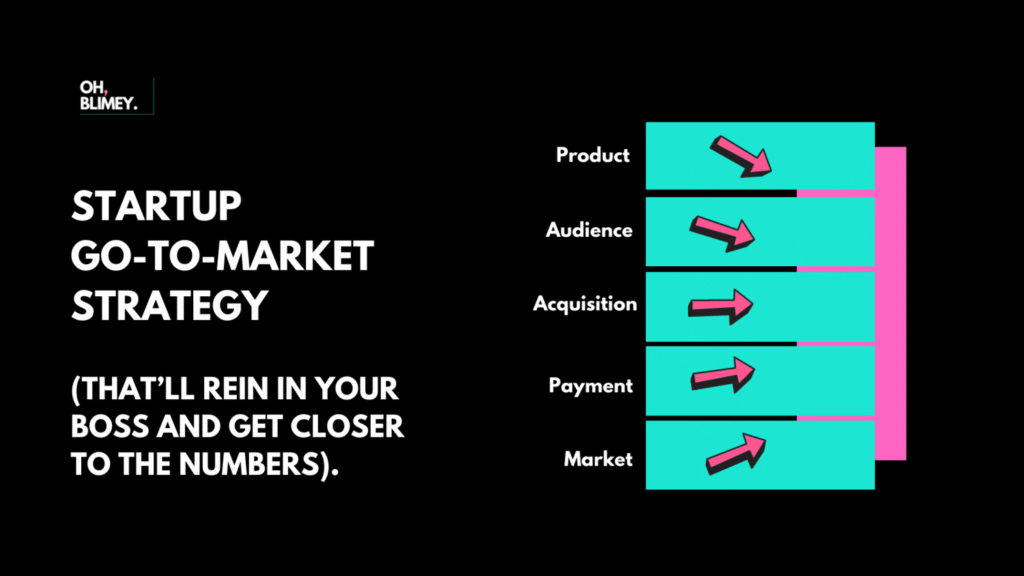Your product works. Maybe not perfectly, but well enough to show it solves a real problem. Now comes the hard part of getting it into people’s hands. That’s where your go-to-market (GTM) strategy matters. This is an actual plan for how to reach the right users, in the right way, and build momentum without wasting time or money.
Ground Everything in a Real Pain Point
Founders often start with the tech. The more useful approach is to start with pain. If you’ve built something because it was technically interesting but don’t have a clear answer to “what problem does this solve and who’s actively feeling it?”, it’s time to dig deeper.
You’re not selling a product. You’re solving a problem. The sharper your understanding of the pain, the easier it becomes to write landing pages, cold emails, ads, or docs that hit.
Position Like a Builder, Not a Marketer
Founders sometimes think positioning means finding the right slogan. But it’s more than a copy. It’s how your product fits into a customer’s brain. How they talk about it to someone else. Why they choose it over the dozen others in their bookmarks.
Your task is to sound right. Speak clearly about what the product is, who it’s for, and why it’s better. Not in general, but for this specific type of user, doing this specific task.
This is especially true in fields like AI or SaaS, where there’s constant noise. If you’re adopting AI in SaaS, you’ll need a message that cuts through hype and shows how the AI actually improves the workflow.
Build a Sales Motion That Works at Your Stage
You don’t need a sales team right away. But you do need a way for people to go from hearing about your product to using it. That’s your sales motion, whether it’s self-serve, founder-led calls, or onboarding sessions with early users.
If you’re B2B and the product is at all complex, talk to people directly. Founders should be in these calls early and often. You’ll learn fast what actually matters to buyers, what objections come up, and what parts of your pitch land.
Your sales motion is part of your product. Don’t separate them. And don’t overbuild before you’ve closed a few customers manually.
Get Your Infrastructure Ready
Even in early stages, set up just enough structure to measure what’s working. A basic CRM. A way to track which messages bring users in. An onboarding process that’s easy to repeat and tweak.
This matters more if you’re working on a B2B tool or something with a long decision cycle. For example, if you’re thinking about SaaS development process at scale, building early with flexibility in mind will save you weeks down the line.
Don’t Overthink Pricing
Pricing is emotional, not just financial. It tells users how serious you are, what kind of customer you want, and whether the value makes sense. For tech startups, there’s a tendency to go freemium or “figure it out later.” That’s a missed opportunity.
Instead of aiming for perfect pricing, get something reasonable live, and talk to users who say no. Ask where the friction is. Are you too cheap to seem legit? Are you asking too much before showing value?
You’ll probably change pricing more than once. The goal is to learn which structure makes the product easier to sell, not just cheaper to buy.
Go Where Your Users Already Talk
Focus on the places your users already go for advice, news, or solutions. That might be X (Twitter), Hacker News, Slack communities, niche Discords, Product Hunt comments, or even email newsletters.
It’s tempting to try everything: SEO, paid, LinkedIn, cold outreach. But most channels don’t work until you understand your buyer deeply. Pick one or two spots, show up consistently, and use them to test messages and collect feedback.
Think of GTM as Part of Product Work
Your GTM isn’t separate from your product roadmap. It should shape what you build next. If users are excited by one use case, but confused by another, that tells you where to go.
The best GTM strategies for startups aren’t built in isolation. They’re tied closely to real user behavior. They shape onboarding flows, surface “wow” moments, and reduce friction to value.
If you treat GTM as a side effort, you’ll struggle to grow, even with a great product. If you treat it like part of building, you’ll make faster, smarter decisions.
Go-to-Market Is a Living Thing
Whatever plan you start with will change. Your product will evolve, your users will shift, and the way people buy will adjust. What worked for one persona might stop working next quarter.
The best go-to-market strategies don’t feel like grand reveals. They feel like a series of smart bets made close to the problem, by people who actually understand what they’re trying to solve.

